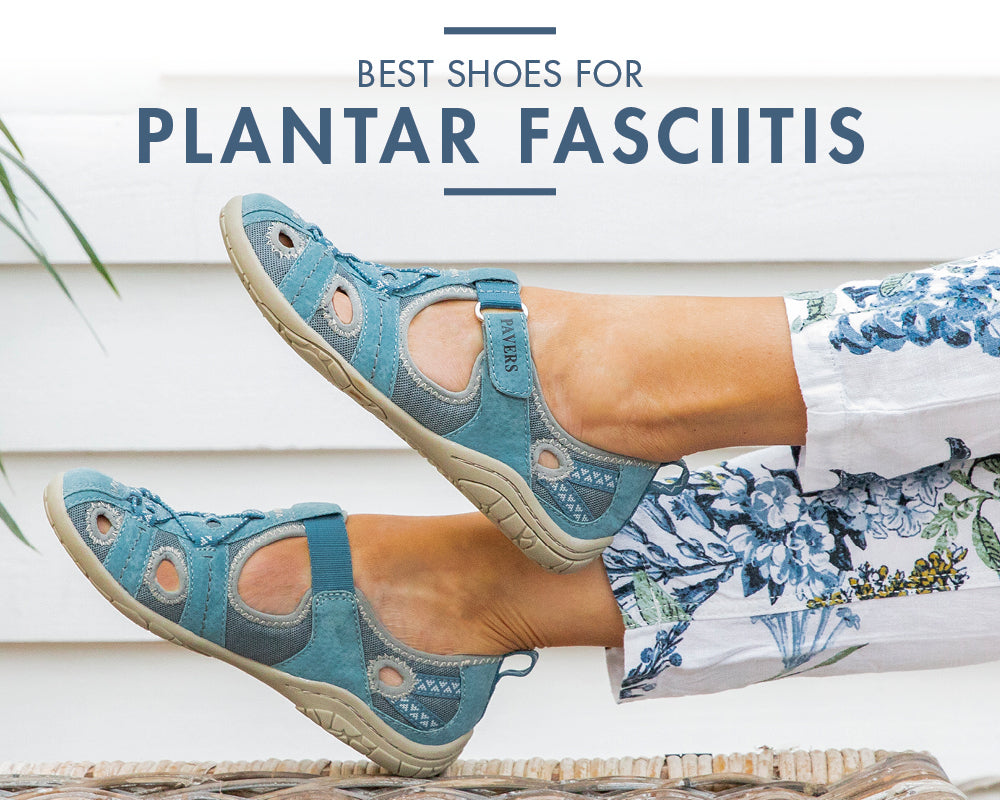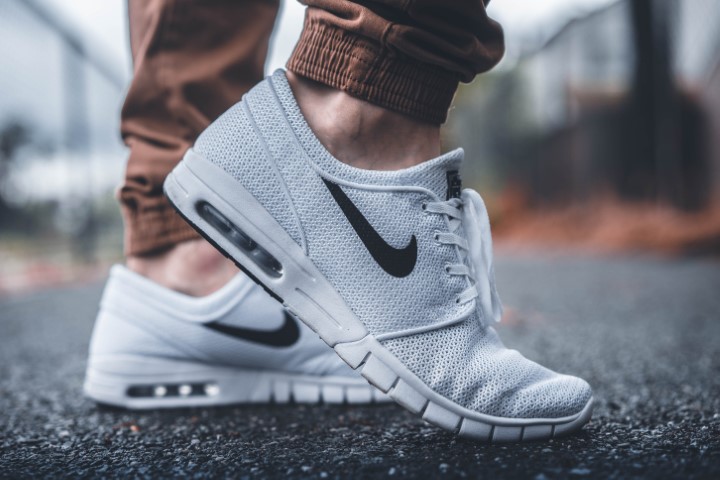Choosing the right footwear is crucial for anyone suffering from plantar fasciitis. This common condition, characterized by inflammation of the plantar fascia, can cause significant heel pain and discomfort. Whether you’re a casual walker, an athletic enthusiast, or someone who spends long hours on your feet, wearing supportive shoes can make all the difference. In this comprehensive guide, we will explore the top shoes for plantar fasciitis available in the U.S. market. With real-world footwear experiences, expert reviews, comparisons, and tips, you’ll be equipped to make an informed decision.
Understanding Plantar Fasciitis
Before diving into our top shoe recommendations, let’s understand what plantar fasciitis is and how the right footwear can alleviate symptoms. Plantar fasciitis occurs when the plantar fascia, a thick band of tissue running across the bottom of the foot, becomes inflamed. This condition often leads to sharp heel pain, especially in the morning or after prolonged periods of inactivity.
Causes of Plantar Fasciitis
Several factors can contribute to the development of plantar fasciitis, including:
- Overuse: Activities that put repeated stress on the heel.
- Foot Mechanics: Flat feet or high arches can lead to improper weight distribution.
- Obesity: Extra body weight increases pressure on the plantar fascia.
- Improper Footwear: Wearing shoes that lack proper support can exacerbate symptoms.

What to Look for in Shoes for Plantar Fasciitis
When selecting shoes to manage plantar fasciitis, consider the following features:

Arch Support
Good arch support is essential for alleviating the strain on your plantar fascia. Look for shoes with built-in arch support or consider using custom orthotics.
Cushioning
Adequate cushioning absorbs shock and reduces stress on the heel and arches. Look for shoes with high-density foam or gel cushioning.

Heel Stability
Structured heel counters provide stability and help maintain the foot’s natural alignment during movement.
Flexibility
While some flexibility is necessary for comfort, overly flexible shoes can lead to instability. Aim for a balance that allows for natural foot movement while providing support.

Top Shoes for Plantar Fasciitis
We have researched and reviewed various shoes specifically designed for plantar fasciitis, emphasizing comfort, support, and durability. Below are our top contenders.

1. ASICS Gel-Kayano 28
The ASICS Gel-Kayano 28 is a popular choice among runners and walking enthusiasts. With its FlyteFoam technology and GEL cushioning, it provides excellent shock absorption and comfort. The Dynamic DuoMax Support System enhances stability, making it ideal for those with overpronation.
- Pros: Excellent arch support, breathable mesh upper, durable.
- Cons: Higher price point.
2. Brooks Ghost 14
Known for its soft cushioning and support, the Brooks Ghost 14 delivers a smooth ride, perfect for extended periods of walking or running. It features segmented crash pads for optimal heel-to-toe transitions and a spacious toe box.
- Pros: Lightweight, great cushioning, available in wide sizes.
- Cons: May require a break-in period.

3. New Balance 990v5
A classic model, the New Balance 990v5 offers premium cushioning and stability. The ENCAP midsole technology provides support while ensuring durability. This shoe is often recommended for individuals seeking both comfort and style.
- Pros: Stylish, built-in arch support, made in the USA.
- Cons: Heavier than some competitors.
4. Hoka One One Bondi 7
The Hoka Bondi 7 features maximum cushioning, making it one of the most comfortable shoes on the market. Its Meta-Rocker technology promotes a smooth transition from heel to toe, reducing strain on the feet.
- Pros: Exceptional cushioning, lightweight, great for long distances.
- Cons: Bulky design may not appeal to everyone.

5. Saucony Triumph 19
The Saucony Triumph 19 is designed with PWRRUN+ cushioning, providing a plush feel while maintaining responsiveness. It offers excellent arch support and a comfortable fit, perfect for everyday wear or long walks.
- Pros: Comfortable fit, responsive cushioning, stylish design.
- Cons: May feel too soft for some runners.
Comparison Table of Top Shoes for Plantar Fasciitis

| Model | Arch Support | Cushioning | Stability | Price Range |
|---|---|---|---|---|
| ASICS Gel-Kayano 28 | Excellent | High | Very Stable | $160 – $180 |
| Brooks Ghost 14 | Good | High | Moderate | $130 – $150 |
| New Balance 990v5 | Good | High | Very Stable | $175 – $200 |
| Hoka One One Bondi 7 | Excellent | Maximum | Good | $150 – $180 |
| Saucony Triumph 19 | Good | High | Moderate | $150 – $170 |
Real-World Experiences and Case Studies
To provide additional insights into the effectiveness of these shoes, we’ve gathered testimonials from individuals who experience plantar fasciitis.
ASICS Gel-Kayano 28 Testimonials
“Since switching to ASICS Gel-Kayano 28, my heel pain has significantly decreased. I can now walk my dog for long walks without discomfort!” – Sarah, NYC
Brooks Ghost 14 Case Study
“As a nurse who spends all day on my feet, I need reliable shoes. The Brooks Ghost 14 has been a game-changer, providing comfort and support throughout my shifts.” – Mark, Chicago
New Balance 990v5 Feedback
“I was hesitant to invest in New Balance 990v5 shoes, but they are worth every penny. They provide excellent arch support and are stylish enough for daily wear.” – Jessica, San Francisco
Tips for Managing Plantar Fasciitis
In addition to choosing the right footwear, consider these tips to help manage your plantar fasciitis effectively:
1. Stretch Your Feet
Incorporating stretching exercises for your feet and calves can alleviate tension in the plantar fascia. Simple toe stretches and calf raises can be beneficial.
2. Maintain a Healthy Weight
Reducing excess weight can help minimize pressure on your feet. Consult a healthcare professional for dietary guidance if needed.
3. Alternate Footwear
Alternate between different pairs of supportive shoes to reduce the repetitive strain on your feet. Ensure you have a variety of footwear options suitable for different activities.
4. Consider Orthotics
If standard shoes do not provide the necessary support, custom orthotics may be a perfect solution. These can be tailored specifically to your foot shape and needs.
Frequently Asked Questions (FAQs)
1. What are the best shoe brands for plantar fasciitis?
Some of the best shoe brands specifically designed for plantar fasciitis include ASICS, Brooks, New Balance, Hoka One One, and Saucony.
2. Can wearing the wrong shoes cause plantar fasciitis?
Yes, wearing shoes that lack proper support, cushioning, or fit can contribute to developing plantar fasciitis or worsen existing symptoms.
3. How often should I replace shoes for plantar fasciitis?
It’s recommended to replace shoes every 300-500 miles or every 6-12 months, depending on your activity level and shoe condition.
4. Are sandals good for plantar fasciitis?
Not all sandals are suitable for plantar fasciitis, but there are some brands that offer sandals with arch support and cushioning designed for this condition.
5. Can physical therapy help with plantar fasciitis?
Physical therapy can be beneficial in treating plantar fasciitis, as therapists provide tailored exercises and stretches to relieve pain and improve foot mechanics.
6. Is it okay to walk barefoot if I have plantar fasciitis?
Walking barefoot can increase discomfort for those with plantar fasciitis. It’s advisable to wear supportive footwear, even at home.
7. What exercises can help manage plantar fasciitis pain?
Exercises that focus on stretching the calf muscles and plantar fascia, such as toe stretches, calf stretches, and rolling a ball under the foot, can help relieve pain.
Conclusion
Choosing the right footwear is vital for managing plantar fasciitis effectively. The shoes highlighted in this guide offer various features to provide the support, stability, and cushioning necessary to alleviate symptoms. Remember, each person’s feet are unique, so what works for one individual may not work for another. Always consider your specific needs and, if necessary, consult with a healthcare professional to find the best solution for you. With the right shoes in hand, you can say goodbye to foot pain and hello to a more active and comfortable lifestyle!